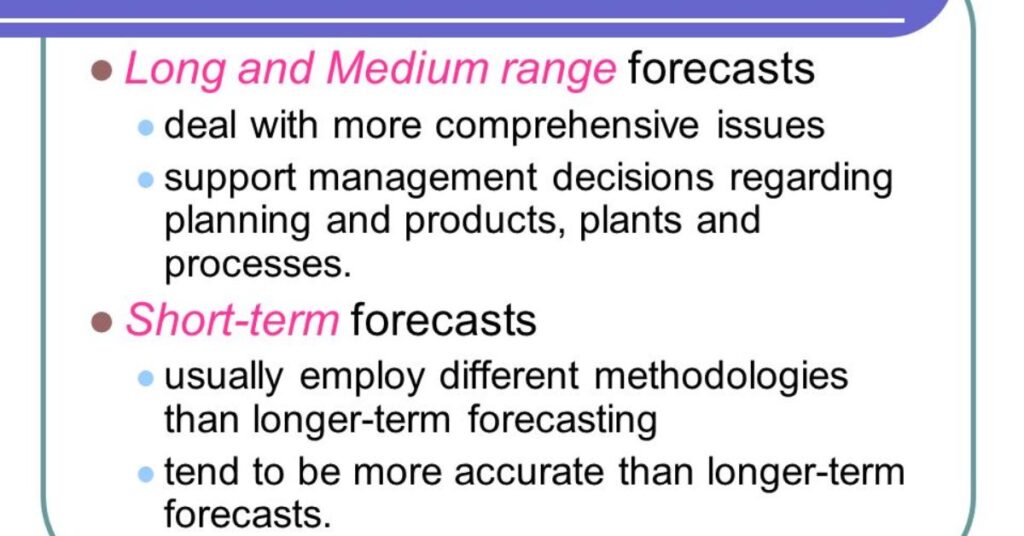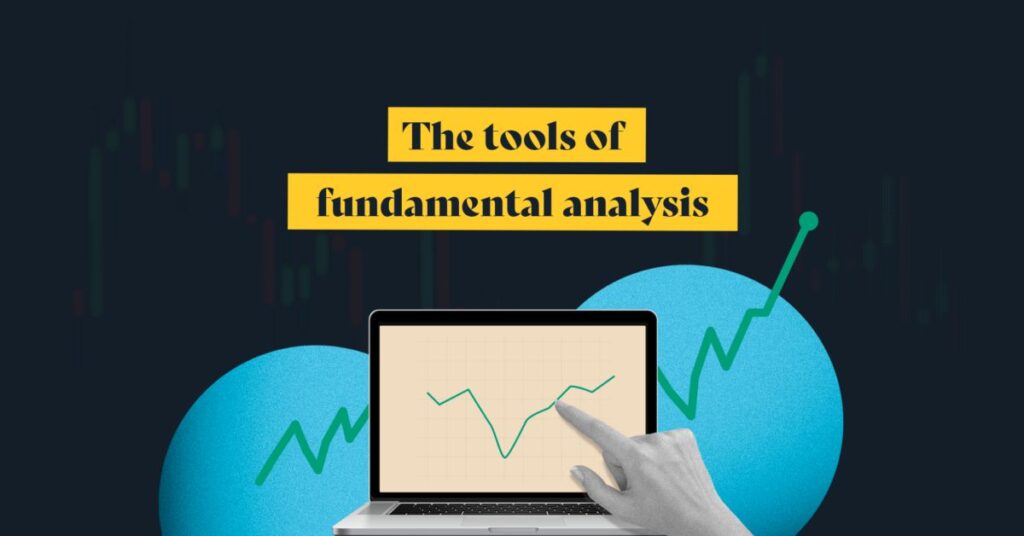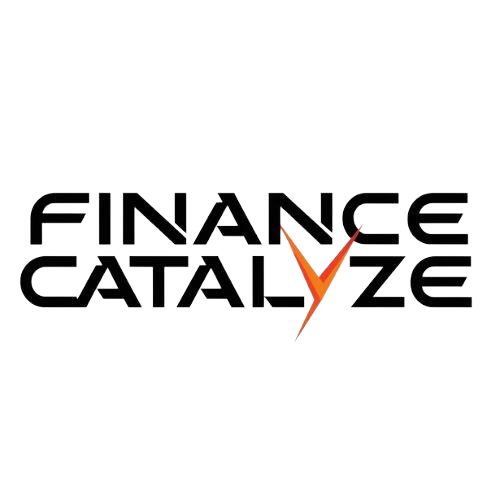Nasdaq Fintechzoom Price Prediction refers to the analysis and forecast of future price movement within the financial technology sector specifically focusing on companies list on the Nasdaq exchange. This involves using various data analytics techniques, market trends and expert insights to anticipate potential gains or losses in stock prices. The predictions goal to assist investors in making informed decisions regarding their investments in fintech stocks traded on the Nasdaq market.
will nasdaq keep going up
The predicting the future movement of the Nasdaq index is challenging due to the dynamic nature of the stock market. While past trends can provide some insight there are various factors that can influence the direction of the market. It including economic indicators, geopolitical events and investor sentiment.
It is must to conduct thorough research and consider diverse perspectives before making any investment decisions. Ultimately, the path of the Nasdaq will depend on a combination of these factors and how they unfold in the coming months and years.
Nasdaq’s Role In Fintech
- Nasdaq serves as a beacon of innovation in the financial technology (fintech) sector.
- It provides a platform for fintech companies to raise capital and list their stocks.
- Nasdaq advanced trading systems prove the integration of finance with technology.
- The exchange pioneers electronic trading setting standards for global markets.
- Nasdaq offers powerful analytics tools that aid in fintech growth and development.
- It explores emerging technologies like blockchain for secure and efficient transactions.
- Nasdaq serves as an incubator for fintech startup providing them with visibility and access to capital.
- The exchange strong compliance standards guide startups in navigating complex regulatory environments.

Connection Between Nasdaq And Fintech Innovation
The connection between Nasdaq and fintech innovation is strong and symbiotic. Nasdaq known for its advanced trading platform embodies the fusion of finance and technology. It pioneers electronic trading systems and offers powerful analytics tools must for fintech growth.
Through its platform Nasdaq serves as both a marketplace and an incubator for fintech startup. The empowering them to innovate and scale in the rapidly evolving financial landscape.
Impact Of Nasdaq On Fintech Startups
Capital Access: Nasdaq provides fintech startups with a platform to raise funds, helping their growth trajectory.
Visibility: Listing on Nasdaq enhances a startup profile attractive investors and customers thereby increasing visible and market reach.
Regulatory Guidance: Nasdaq robust compliance standards help startups navigate complex regulatory frameworks ensuring adherence to regulatory requirements.
Market Validation: Being listed on Nasdaq validates a fintech startup credibility and potential imparting confidence in investors and stakeholders.
Networking Opportunities: Nasdaq provides networking opportunities with other fintech companies. The investors and industry experts fostering collaboration and partnerships for mutual growth.
Global Exposure: Nasdaq global presence exposes fintech startups to international markets expanding their business opportunities beyond domestic boundaries.
Analyzing The Fintech Market
Analyzing the fintech market involves assessing various factors that contribute to its growth and evolution. Here are some key aspects.
Market Trends: Identifying emerging trends such as digital payments blockchain technology and robo advisors provides insights into where the market is headed.
Key Players: Analyzing leading fintech companies like Square, PayPal and Stripe helps understand market dynamics and competitive landscape.

Consumer Adoption: Tracking consumer behavior and adoption rates of fintech solutions provides valuable data on market demand and preferences.
Regulatory Environment: Understanding regular changes and compliance requirements is crucial for assessing risks and opportunities in the fintech space.
Investment Landscape: Examining investment patterns and funding activities in fintech startups provides insights into investor confidence and market sentiment.
Technological Innovations: Keeping abreast of technological advancements. For example AI, machine learning and blockchain drives innovation and shapes the future of fintech.
Global Market Dynamics: Analyzing global market trends and regional differences helps identify opportunities for expansion and growth in different markets.
Growth Trends And Market Potential
| Year | Global Fintech Market Value | Predicted Growth |
| 2021 | $110 billion | Steady increase |
| 2022 | $128 billion | Strong growth |
| 2023 | $150 billion | Rapid acceleration |
Fintechzoom’s Place In The Market
Fintechzoom holds a prominent position in the financial technology sector offering innovative solutions that empower investors with valuable insights. With its unique offerings and specialized focus on Nasdaq forecasts Fintechzoom has carved a niche in the bustling fintech market.
Traders trust on its real time updates, expert analysis and customize. The tools to make informed decisions cementing its place as a go to resource in the industry.
Also Read: Money fintechzoom – A roadmap to financial success!
Understanding Fintechzoom’s Services
Understanding Fintechzoom’s services is must for informed trading decisions. The platform provides real time market data, expert analysis and customize tools tailored to investors needs. With Fintechzoom, users can stay ahead with live updates gain insights from industry leaders and equip themselves with be spoke solutions for enhanced trading experiences.
Comparative Market Analysis
A comparative market analysis (CMA) involves evaluating similar properties in a particular area to determine their value in comparison to the subject property. It helps buyers and sellers make informed decisions by providing insights into market trends, pricing strategies and property features.

They analyzing factors such as location, size, condition and recent sales data. A CMA enables stakeholders to assess the competitive landscape and set reality expectations for their transactions.
| Property | Location | Size (sq ft) | Condition | Recent Sale Price ($) |
| Property A | Downtown | 1,200 | Excellent | $500,000 |
| Property B | Suburbs | 1,500 | Good | $450,000 |
| Property C | Urban | 1,000 | Fair | $400,000 |
| Property D | Rural | 2,000 | Excellent | $550,000 |
Historical Price Movements
The historical price movements refer to the past fluctuations in the value of a financial asset. Such as stocks, bonds and commodities. Analyzing these movements provides valuable insights into market trends, investor behavior and potential future performance. They studying highs and lows on price chart investors can identify pattern anticipate market movement and make informed investment decisions.
Past Performance Of Nasdaq Fintechzoom
- Bull runs reflect periods of investor confidence and upward price momentum in Nasdaq Fintechzoom.
- Market dips indicate potential concerns or corrections in the performance of Nasdaq Fintechzoom.
- Historical price fluctuations show peaks during tech booms and falls during market corrections.
- Past trends provide insights into how Nasdaq Fintechzoom has reacted to various market conditions and events.
- Analyzing historical performance helps investors understand the volatility and potential risks associated with Nasdaq Fintechzoom.
What History Tells Us
- History offers valuable insights into past market events and their impacts on financial assets.
- Strong financial performances in the past have often led to price surges in the future.
- Changes in market conditions and economic factors can influence the trajectory of financial assets like Nasdaq Fintechzoom.
- Historical trends may repeat themselves, providing patterns that investors can use to inform their decisions.
- While history can provide guidance it is important to recognize that past performance is not indicative of future result and market conditions can change unpredictably.
Expert Predictions
- Analysts provide varied opinions on the future performance of Nasdaq Fintechzoom based on factors like innovation, competition and market dynamics.
- Some experts remain bullish citing innovative services and compliance as strengths driving potential growth.
- Others express caution due to fierce competition and potential challenges in the fintech industry.
- Many emphasize the significance of partnerships in Nasdaq Fintechzoom’s growth strategy highlighting collaboration as a key factor for success.
- Investor sentiment often reflects these analyses influencing stock performance and market trends.
Analyst Opinions On Fintechzoom
Analyst opinions on Fintechzoom vary, with some highlighting its innovative services and adaptability while others express caution due to fierce competition. Many emphasize the importance of partnerships in Fintechzoom’s growth strategy influencing investor emotions and stock performance.
Long-term Outlook And Forecasts

- Long-term forecasts for Fintechzoom project positive trends and significant growth potential.
- Anticipated market expansion in the coming years suggests a promising outlook for Fintechzoom.
- Stabilizing prices and continued innovation are expected to contribute to the company long term success.
- Tech adoption and regulatory changes will like shape Fintechzoom’s trajectory in the years ahead.
Technical Analysis
| Indicator | Description |
| Moving Average | Smooths out price data to identify trends over a specific time period. |
| Relative Strength Index (RSI) | Measures the magnitude of recent price changes to determine overbought or oversold conditions. |
| Moving Average Convergence Divergence (MACD) | Identifies changes in trend momentum by analyzing the relationship between two moving averages. |
| Bollinger Bands | Indicates volatility by plotting two standard deviations away from a simple moving average. |
| Volume | Represents the number of shares traded, providing insights into market participation and strength of price movements. |
Chart Patterns And Indicators
The chart patterns and indicators are must tools used in technical analysis to forecast price movements in financial markets. Chart patterns, such as head and shoulders or triangles provide visual cues about potential trend reversals or continuations. Meanwhile, indicators like MACD and RSI offer quantity insights into momentum overbought or oversold conditions aiding traders in making informed decisions.
Volume And Price Trends
| Volume Trend | Price Impact |
| Increasing | Strong Support/Resistance |
| Decreasing | Weak Support/Resistance |
Fundamental Analysis
Fundamental analysis involves evaluating the basic value of an asset by examining factors such as financial statements, economic indicators and industry trends. This analysis goal to assess the original health and performance of a company or market.

They are helping investors make informed decisions about buying or selling assets. Key aspects of fundamental analysis include assessing a company revenue, earnings, cash flow and competitive position. As well as considering macroeconomic factors such as interest rates, inflation and geo political events.
Earnings Reports And Financial Health
| Aspect | Description |
| Revenue | Total income generated by a company through its business activities. |
| Net Income | The company’s total profit after deducting expenses, taxes and interest. |
| Earnings Per Share (EPS) | The portion of a company profit allocated to each outstanding share of common stock. |
| Cash Flow | The net amount of cash and cash equivalents moving into and out of a company. |
| Guidance | Forecasts or expectations provided by a company regarding its future performance. |
Regulatory Environment And Its Effects
- Data protection laws govern the handling of personal data impacting how companies manage user information.
- Licensing requirements mandate specific permits for conducting various business activities ensuring legal compliance.
- International regulations dictate rules for cross border operations influencing the expansion strategies of businesses.
- Compliance standards set by regulatory bodies guide companies in meeting legal obligations and maintaining ethical practices.
External Factors Influencing Price
Economic Indicators: Key economic metrics like GDP, unemployment rates and inflation can impact investor sentiment and influence asset prices.
Geopolitical Tensions: Events such as trade disputes, military conflicts or policy changes can create market uncertainty affective investor confidence and asset prices.
Technological Innovations: Advancements in technology and changes in consumer behavior can drive demand for certain assets and industries impacting their prices.
Regulatory Changes: Updates in laws and regulations particular in sectors like finance and healthcare. Youcan affect business operations and investor sentiment leading to price fluctuations in related assets.
Also Read: Can i get euros from post office without ordering?
Economic Indicators
Economic indicators are key metrics used to assess the health of an economy. They include measures like GDP growth, unemployment rates and inflation figures. Which provide insights into the overall economic performance. Investors closely monitor these indicators as they can impact market sentiment and influence investment decisions.
Geopolitical Tensions And Their Implications
- Geopolitical tensions such as trade disputes or military conflicts can create uncertainty in global markets.
- Investor sentiment may be negatively affect by geo political instability leading to increased volatility in asset prices.
- Geopolitical events can impact supply chains disrupt trade agreements and alter government policies all of which can have implications for businesses and investors.
- Safe-haven assets like gold or government bonds can see increased demand during periods of heightened geopolitical tensions.

Investment Strategies
Investment strategies are plans or approaches used by investors to achieve their financial goals. They encompass various methods, including diversification, timing the market, and risk management, tailored to individual preferences and risk tolerance.
Timing The Market For Fintechzoom
Timing the market for Fintechzoom involves strategically buying and selling shares of the company based on perceived market trends and price movements. Investors aim to capitalize on favorable market condition. Such as anticipated growth or dips in stock prices to maximize returns on their investments.
Diversification And Risk Management
The diversification and risk management are crucial elements of investment strategy. Diversification involves spreading investments across different assets sectors, and geographic regions to reduce exposure to any single investment risk. Meanwhile, risk management goal to identify, assess and mitigate potential risks associated with investment decisions. The help investors protect their capital and achieve long-term financial goals.
| Asset Class | Allocation (%) |
| Stocks | 60 |
| Bonds | 30 |
| Real Estate | 10 |
Potential Challenges
Market Saturation: Increasing competition in the fintech industry can limit growth opportunities for person companies and lead to aggressive pricing strategies.
Technological Disruptions: Rapid advancements in technology require fintech platforms to continuously innovate and adapt to remain competitive.
Regulatory Changes: Evolving regulations governing digital finance can introduce new costs or constraints impacting the operations and profit of fintech companies.
Customer Expectations: Fintech firms must meet evolving customer demands for convenience, security and personal services to maintain market relevance and competitive.
Competition And Market Saturation
The competition and market saturation in the fintech industry refer to the increasing number of players offering similar services. They lead to intense competition and potentially limiting growth opportunities. As more companies enter the market it become challenge for person firms to different themselves and attract customers.

This can result in aggressive pricing strategies decreased profit margins and reduced market share for some players. Maintaining a competitive edge often requires continuous innovation strategic partnerships and effective marketing strategies.
Technological Disruptions And Adaptability
The technological disruptions in the fintech industry refer to rapid advancements and innovations that reshape how financial services are deliver and consumed. Fintech companies must adapt quickly to these changes to remain competitive and relevant in the market.
This includes embracing new technologies such as blockchain artificial intelligence and cloud computing to improve efficiency, security and customer experience. Firms that fail to adapt risk falling behind and losing market share to more agile competitors. Therefore, adaptability and innovation are crucial for fintech company to thrive in an ever evolving technological landscape.
The Road Ahead
The road ahead for the fintech industry promises continued innovation and evolution driven by advance in technology and change consumer behaviors. Fintech companies must remain agile and adaptable to navigate through challenges and capitalize on emerging opportunities for growth and expansion.
Innovation As A Growth Driver
Innovation serves as a potent growth driver in the fintech landscape, proper the industry forward with groundbreaking solutions and services. They embracing emerging technologies like AI and blockchain fintech firms can revolutionize financial service. The stream operations and cater to evolving consumer need paving the way for sustainable growth and market leadership.
The Evolving Landscape Of Fintech
The evolving landscape of fintech reflects dynamic shifts in how we manage and interact with money. With mobile payments, online banking and digital currencies gaining prominence fintech continues to reshape traditional finance.
As technology advances and consumer behaviors evolve the fintech sector stands at the forefront of innovation driving change. That redefine the way we transact invest and access financial services.
| Year | Trends | Impact on Nasdaq Fintechzoom |
| 2021 | Mobile Payments | Increased market attention. |
| 2022 | Online Banks | Growing interest from buyers. |
| 2023 | Digital Currencies | Potential for higher market value. |
Final Thought
The fintech sector continues to evolve rapid driver by innovation technological advancement and changing consumer preferences. As the industry expands and adapts to emerging trend opportunities for growth and disruption abound. Fintech companies must remain agile customer centric and innovative to navigate the complexities of the market and capitalize on the vast potential that lies ahead. With a commitment to excellence and a forward thinking approach. The future of fintech holds endless possibile for reshaping the way we engage with finance and unlocking new avenues for prosperity and progress.
Frequently Asked Questions
What is Nasdaq Fintechzoom?
Nasdaq Fintechzoom is a platform providing insights and analysis on fintech markets.
How does Nasdaq Fintechzoom impact fintech markets?
Nasdaq Fintechzoom influences fintech markets by offering specialized insights and forecasts.
What services does Nasdaq Fintechzoom offer?
Nasdaq Fintechzoom offers real-time market data, expert analysis, and customized tools.
Is Nasdaq Fintechzoom publicly traded?
No, Nasdaq Fintechzoom is not publicly traded it is an informational platform.
How does Nasdaq Fintechzoom contribute to fintech innovation?
Nasdaq Fintechzoom contributes to fintech innovation through its advanced analytics and market research capabilities.

Haarrii, a seasoned finance expert with 4 years of hands-on experience, brings insightful analysis and expert commentary to our platform. With a keen eye for market trends and a passion for empowering readers, Haarrii delivers actionable insights for financial success.







